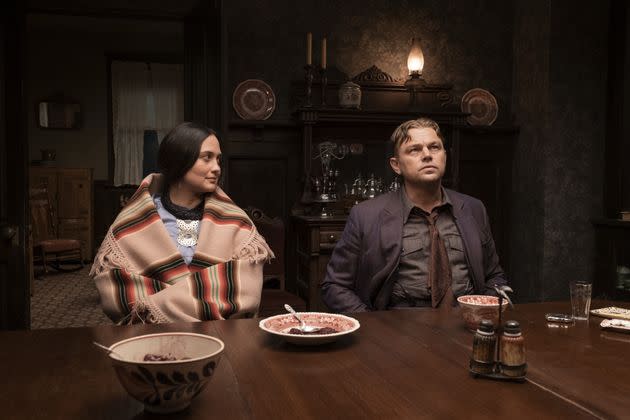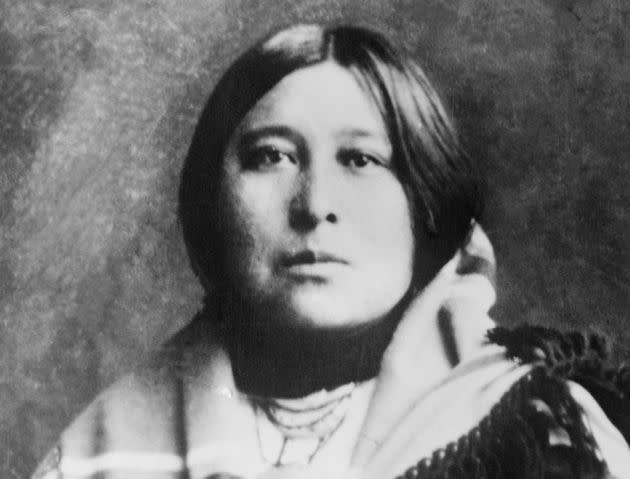This is an excerpt from our true crime newsletter, Suspicious Circumstances, which sends the biggest unsolved mysteries, white-collar scandals and captivating cases straight to your inbox every week. Sign up here.
“Killers of the Flower Moon,” Martin Scorsese’s film adaptation of the riveting true-crime book of the same name, might be the most buzzworthy film of 2023. It premiered this weekend at the Cannes Film Festival in France, where it got a nine-minute standing ovation, and it earned rave reviews from film critics and fans who watched its stunning trailer, which dropped on May 18. (The strongest criticism of the film so far seems to concern Leonardo DiCaprio’s accent.)
The film wouldn’t exist without the meticulous research of New Yorker journalist David Grann for his 2017 book, “Killers of the Flower Moon: The Osage Murders and the Birth of the FBI.” It recounts the murders or suspicious deaths of at least 24 members of the Osage tribe in the early 1920s in Oklahoma, as well as the efforts of the newly formed FBI to seek justice. Ahead of the film’s release, some feared it might place too much emphasis on the white men who investigated the case, at the expense of focusing on the victims; early viewers, including one descendant of an Osage man who was killed, say it succeeds in honoring their stories.

Lily Gladstone and Leonardo DiCaprio in “Killers of the Flower Moon.”
One of my favorite accounts of true crime history, “Killers of the Flower Moon” is a chilling indictment of the systemic slaughter, abuse and mistreatment of Native people, robbing them of their land and autonomy through overt and insidious campaigns to eradicate their culture, homeland, identity and history.
The victims of what became known as the Reign of Terror included nearly all the members of Osage woman Mollie Burkhart’s family, who were targeted in a sinister plot to acquire their mineral rights. The government had driven their tribe from their land in Kansas, which was coveted by white settlers, to a new reservation in Oklahoma. The rocky land made farming almost untenable, but it turned out to contain gold — “black gold,” the nickname for the oil that would make the Osage “the wealthiest people per capita in the world,” Grann writes. (Often, however, even the Osage members’ own money was controlled by white “guardians.”)
Mollie (played by Indigenous actor Lily Gladstone), who was married to a white man, Ernest Burkhart (DiCaprio), successively lost her older sister, Anna (shot in the back of the head), her mother (likely poisoned) and her younger sister (killed along with her husband by a bomb that destroyed their house). The mastermind behind their killings and the deaths of other Osage people, white witnesses, accomplices and even investigators was William Hale, a ruthless, politically powerful rancher (played, of course, by Robert De Niro).

Mollie Burkhart lost her family in the Oklahoma murders.
Hale was eventually brought to justice (if you can call his single conviction and early prison release “justice”) by a determined FBI field agent named Tom White (Jesse Plemons). His yearslong investigation — which hinted at a much larger, menacing conspiracy and massive corruption — was fraught, frustrating and dangerous. An attorney, for example, was thrown naked from a speeding train while he was on the way to deliver incriminating evidence to the Osage County sheriff.
The FBI narrative in the book is meandering — an accurate account but not as interesting as the chapters focused on the Osage community — and, despite the villains being white, these passages have white savior underpinnings. In fact, Scorsese revised the original premise of the film to shift the story’s focus from the FBI agent to a suspect — Mollie’s husband Ernest — resulting in an intimate portrayal of Mollie’s family, Scorsese said in an interview with Deadline. The filmmaker did his own additional research and even met with the Osage tribe, ultimately realizing that at its essence, “Killers of the Flower Moon” is a love story between Mollie and the husband who betrayed her.
Jim Gray, a former Osage Nation chief, said in a May 20 Twitter thread that he attended a private screening of the film — he is a direct descendant of Henry Roan, Mollie’s first husband, who was shot to death in 1923 — and praised Scorsese for the “dignity and care for the Osage perspective,” calling the filmmaking “genuine and honest.”
“I had legitimate concerns that the movie industry might miss the point of the story beyond the violence, and I was fairly outspoken about it when the bidding war for the movie was going on in 2017,” he wrote. He confirmed that Scorsese met with the tribe and reworked the film and made casting changes that “brought the Osage closer to the heart of the story than about the birth of the FBI.”
Gray also expressed his gratitude to Grann, the book’s author, and Osage writer Charles Red Corn for giving Scorsese “the canvas to paint this story with his vision.”
“Killers of the Flower Moon” will open in theaters on Oct. 6. This gives you plenty of time to read the book — and maybe even “find the wolves in this picture.”
